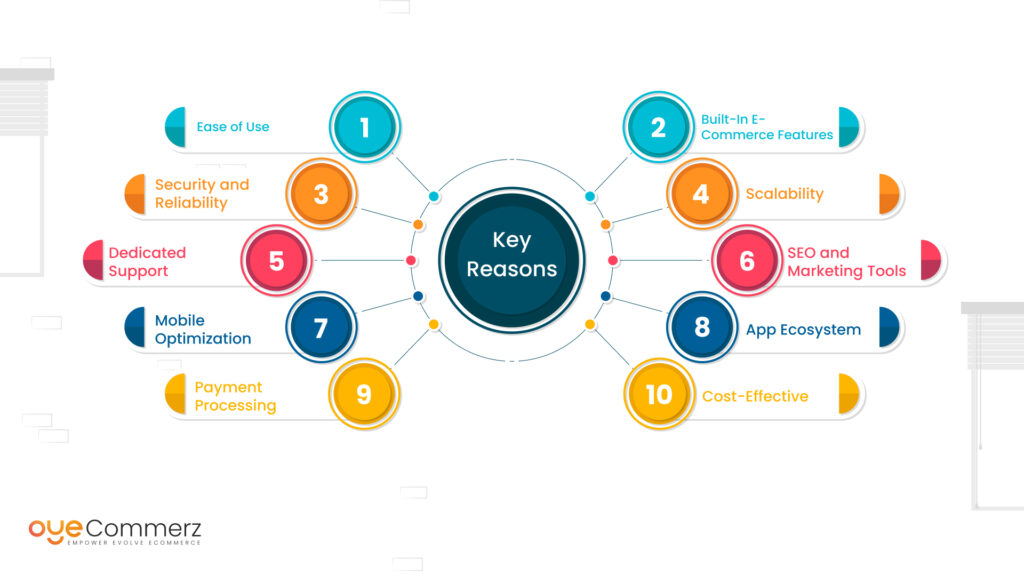In the constantly changing sphere of digital commerce, picking the right system is crucial for your business's growth. If you’re presently using WP and thinking about a migration to Shopify, you’re not the only one. Numerous businesses are making this transition to leverage Shopify’s robust features, user-friendliness, and scalability. This guide will take you through the steps of migrating from WordPress to Shopify smoothly, making sure that you unlock your eCommerce potential.
Why Migrate from WP to Shopify?
Before exploring the migration procedure, it’s important to understand why this transition can be advantageous for your eCommerce business:
Accessible Tools: Shopify features an straightforward system that streamlines store operations, making it easier for non-technical users.
Flexibility: As your business expands, Shopify can support higher visitors and transactions without affecting speed.
Built-in Tools: Shopify includes built-in tools for search engine optimization, analytics, payment handling, and more, reducing the necessity for several plugins.
Enhanced Security: With Shopify, you get access to advanced security measures that protect sensitive customer data.
Steps for a Seamless Migration
Migrating your eCommerce site from WordPress to Shopify requires multiple actions.
Here’s how to ensure a hassle-free transition:
Plan Your Migration Strategy
Start by drafting your migration strategy. Decide on which elements of your present site you plan to move, such as:
Inventory information
Client data
Order history
Articles
Select the Appropriate Migration Option
Based on your preferences, select a Shopify checkout optimization migration plan that aligns with your store. Migration experts offers multiple choices:
Basic Migration Package: Perfect for boutique stores with minimal products.
Regular Option: Suitable for growing businesses with more complex demands.
Advanced Plan: Best for big stores requiring extensive customization.
Secure Your Content
Before initiating the migration, make sure that you have a complete backup of your WP site. This action is essential in situations where anything goes off track during the transfer.
Extract Your Content from WordPress
Leverage plugins or alternative solutions to transfer key information from your WP site:
Inventory
Clients
Sales records
Articles
Migrate Data into Shopify
After you have your data retrieved, utilize Shopify’s built-in features or specialized apps to upload your content into your Shopify store. Ensure that all content is accurately formatted and aligned.
Personalize Your Shopify Platform
After migrating content, customize your Shopify site’s layout to align with your business goals. Consider hiring a designer if you want advanced customization.
Set Up Checkout Systems and Delivery Settings
Configure billing solutions and shipping settings in Shopify to create a seamless purchase experience for customers.
Apply Search Engine Optimization Best Practices
To preserve your online visibility during the transition:
Use 301 URL mappings from previous URLs to migrated ones.
Refresh meta tags.
Enhance visual content and copy for SEO.
Test Your Migrated Platform
Ahead of going live, extensively review your migrated platform. Look out for any discrepancies, checkout failures, or incomplete files.
Publish Your Store
After everything is in ready, it’s the moment to go live! Inform the change to your users and encourage them to discover the updated capabilities of your Shopify store.
Post-Migration Support
Following launching your updated store, regular support is important. Think about partnering with experts who can assist with:
Site maintenance
Customer engagement
Improvement strategies
Conclusion
Migrating from WP to Shopify can be a crucial step for your digital business. By adopting this guide and utilizing tools like those offered by industry leaders, you Shopify checkout optimization can guarantee a effortless transition that improves your digital storefront. Embrace the shift and unlock the potential of Shopify today!
